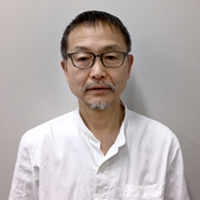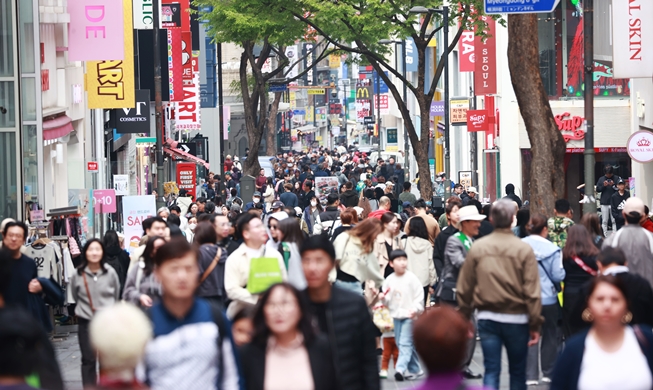-
 Korea.net's 24-hour YouTube channel
Korea.net's 24-hour YouTube channel- NEWS FOCUS
- ABOUT KOREA
- EVENTS
- RESOURCES
- GOVERNMENT
- ABOUT US

By Hideki Yano
Secretary-general of Japan-Korea Joint Action for Legislation to Compensate Korean Victims of Forced Labor
In 2018, the Korean Supreme Court issued a ruling in favor of four Korean victims of forced labor -- Yeo Un-taek, Shin Cheon-su, Lee Chun-sik and Kim Gyu-su -- who sued Nippon Steel (formerly Nippon Steel and Sumitomo Metal Corp.) and the Japanese government for reparations and unpaid wages.
Twenty-one years had passed since the plaintiffs filed their lawsuit in 1997. For them, it was a lifelong legal battle, and the verdict served as proof of the victims' suffering.
But Japan's Abe administration insisted that the forced labor issued had been resolved earlier and blasted the ruling as a violation of international law. It even claimed the victims were not forced to work but were just laborers from the Korean Peninsula. These are all false allegations both legally and historically.
They are also an outright denial of the pain the victims suffered, their struggles filled with adversity and their lives. The false allegations of the Abe administration make it hard to find a breakthrough in the conflict between Korea and Japan. Still, a few related cases means the road to a solution is not completely blocked.
In 1997, Nippon Steel settled a lawsuit filed by 11 relatives of forced labor victims who demanded the repatriation of the victims' remains and their unpaid wages. The company never admitted guilt for the unpaid wages but paid JPY 2 million for each victim on humanitarian grounds over its inability to locate such remains. The bereaved families were also invited to a memorial service for the victims.
The basis for resolving the issue is recognition of the historical truth as well as recognition of the remorse and anger of those who suffered during Japan's illegal rule of Korea. Of the five Japanese companies sued by the plaintiffs, three -- Nippon Steel, Nachi-Fujikoshi and NKK (also known as Japan Steel) – agreed on settlements. Though the Abe administration insisted that the 1965 bilateral claims agreement resolved everything and that these companies did not receive a court ruling on paying reparations, the companies decided to settle the case because they called a resolution through the claims agreement "insufficient."
Keiichi Karatsu, the negotiator for Nippon Steel in the lawsuit, told the Japanese media, "We should not forget the damage they suffered because of a war Japan started," adding, "The first step is to soothe the grudge or resentment of people from the Korean Peninsula."
"It is important to accurately understand the facts and hold serious discussions."
Most Japanese people accept their government's stance as reported by the country's media, so they lack detailed knowledge of the issue. Thus change is needed in Japan's public opinion of the matter for the Abe administration to change its response and Japanese companies to take actions for making amends.
To this end, the Japanese people need accurate knowledge of their nation's history of forced labor mobilization and the truth behind it. They must know that the Japanese government rejects all reparation claims, arguing that Japanese colonial rule of the Korean Peninsula was legal. If such efforts continue, more Japanese will consider Tokyo’s claim that the matter is closed as insufficient in the interest of improving bilateral relations.
Sharing this understanding, groups supporting the victims in their lawsuit, a Korea-Japan civic alliance and pro-peace movement organizations joined forces in 2018 to launch the group Japan-Korea Joint Action for Legislation to Compensate Korean Victims of Forced Labor.
We have organized gatherings and hosted symposiums for people to widen their understanding of the significance of the Korean Supreme Court's verdict, the false allegations made by the Japanese government and its position on the matter, the history and facts behind Japan's forced labor mobilization, and the need to resolve the issue.
In the process, we heard voices on informing more people about such mobilization to change Korea-Japan relations or learn more about past movements or statements to find a breakthrough. Some even opined that they themselves would check the accuracy of Japanese media reports.
These cases are proof of the small changes we made within Japan.
Since November last year, we have distributed a Q&A booklet to help readers easily understand the forced laborer issue. Certain media outlets such as the daily Tokyo Shimbun have covered our story, and we have received requests for booklets from across Japan such as Hokkaido, Kyusyu and Okinawa.
Although there is no sign of improvement in Korea-Japan relations, the forced labor victims have continued their fight to heal the deep sorrow in their hearts. The hard-sought Korean Supreme Court verdict must not be in vain. Japan has people who support the victims and companies that feel responsible. Backed by such awareness, we will continue to fight until the day the victims can rid themselves of their deep sorrow and finally see justice.
Since 1995, Hideki Yano has strived to support a lawsuit filed by Korean victims of forced labor against Nippon Steel and to improve Korea-Japan relations.
Translated by Korea.net staff writer Yoon Sojung.
Most popular
- MSS held a consultative meeting to connect SMEs with international students studying in Korea
- MSS to Strengthen Collaboration in the Startup Sector with Siemens DISW
- Current Employment Statistics, March 2024
- Current Economic Situation, April 2024
- Final Selection of the First Cohort of Presidential Science Scholarship for Graduate Students Completed!













